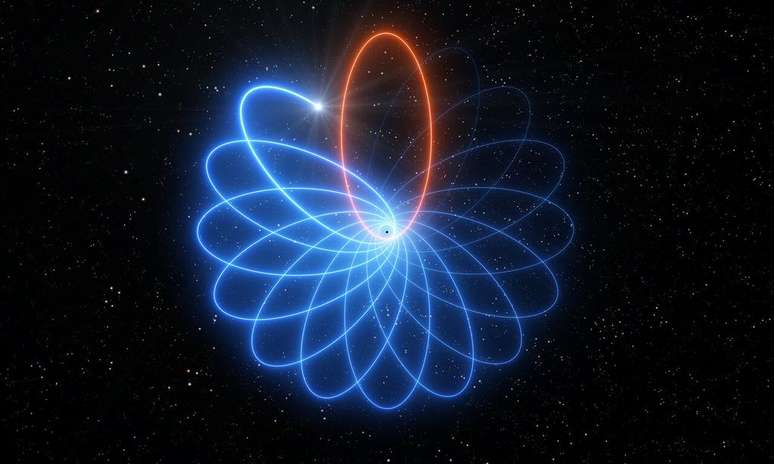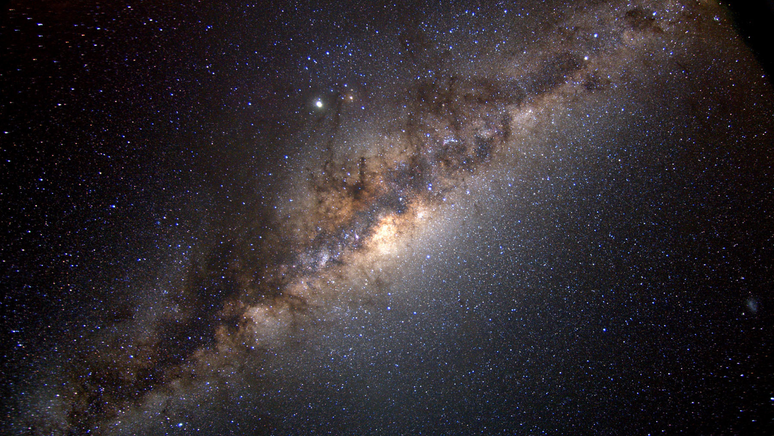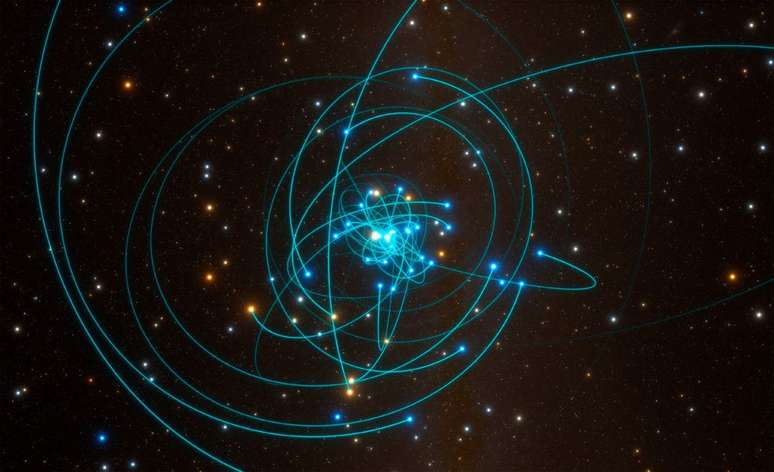Around the center of the Milky Way, where a supermassive black hole resides, is an empty area where stars should be. Where they went?
Scientists are puzzled by the absence of stars at some distance from the supermassive black hole. Sagittarius A*in the center of the Milky Way. According to the theory there should be, but instead there is only a “no-go zone”. Now, two new studies try to explain how this is possible.
- What is at the center of the Milky Way?
- Sagittarius A*: Everything we know about “our” black hole – so far
Close to Sagittarius A*, there is a star cluster known as the SSC (short for S-Star Cluster), whose members are called simply “S stars”. They are important for scientists to study how supermassive black holes at the center of galaxies affect their surroundings. However, some of them would be missing and there is no physical mechanism to explain why.
In the region around the black hole, an extremely hostile area, there are at least 200 stars already detected, some of which astronomers observe to determine their orbits and thus better understand the behavior of objects close to the galactic nucleus.
Scientists are also looking for patterns in their orbits to discover details about the black hole itself. By the way, it was thanks to the monitoring of some of these stars, the so-called S stars, that Reinhard Genzel and Andrea Ghez were able to confirm that a supermassive black hole does indeed exist at the center of the Milky Way — a earned them the Nobel Prize in Physics..
But mysteries remain, and one of them is the absence of stars in the so-called “breakout zone”. The theory says that stars in the vicinity of Sagittarius A* should have a random distribution in the shapes of their orbits, but S stars simply ignore this rule. Also, they don’t exist in the avoidance zone, and no one knows why.
Mysteries in the disks of the stars
A group of physicists – which, by the way, includes Reinhard Genzel himself – has published a study trying to address the problem. They examined the orbits of 50 known S stars for patterns and found a correlation between each star’s distance from the galactic center and the shape of its orbit.
Essentially, the closer a star is to the center of the galaxy, the more eccentric (i.e. oval) its orbit. This goes against the model that suggests a distribution of random orbits and the scientists are really intrigued. No stars with circular orbits have been detected, and if there were any, they would be the easiest to find.

The mystery goes further: Astronomers point out in the paper that individual stars form in molecular cloud cores with radii starting at 0.1 pc (about 0.3 light-years), which is larger than the entire SSC cluster. . So how did 50S stars form in such a compact region?
Finally, the aforementioned absence of stars in a kind of “hole”, which is located in a disk around the black hole, also raises questions about the origin of the SSC. The Avoidance Zone coexists with the S stars and the other 200 stars in the galactic core, all of which are very similar in age. According to the authors, this is evidence that the SSC and the population of stars in the disk could have the same origin.
What is the origin of S stars?
The team presented some possibilities, citing previous studies, including the hypothesis that two massive star disks formed 6 million years ago, orbiting Sagittarius A*, from one or more clouds. Another idea is that there could be another intermediate-mass companion black hole that would have heated the disk of stars and generated these strange orbital characteristics (this proposal will be explored by the team in a second paper).
Another scenario is the so-called Hill mechanism, whereby massive binary stars generated in the larger environment (the outermost disk) around the black hole have been separated by a process, bringing some of them so close to Sagittarius A* that they ended up separating their binary companions from each other. Typically, the more massive star is the one that enters a close orbit around the SMBH, while the other companion may also be ejected far from the galaxy.

An interesting detail of this hypothesis is that, in fact, some hypervelocity stars have been detected in the galactic halo (the area around the Milky Way) and studies have indicated that they were “born” in the center of the galaxy. On the other hand, the Hill mechanism can only explain the current orbits of S stars closest to the black hole, i.e. other stars at greater distances would remain unexplained.
The authors also demonstrated that the time factor can also explain the absence of stars in the evasion region. In other words, it could be that astronomers didn’t detect any stars there because there simply wasn’t a timescale long enough to do so. If so, it is possible that new stars S on more eccentric orbits will appear in this region in the future.
away from the answer
However, these explanations may not work for all the details presented in the study, warns Andreas Burkert, lead author of the paper. “The avoidance zone has a very clear upper limit,” he explains. “It’s like something is blocking the stars from entering the zone, or those that enter the zone are destroyed.”
While the study touches on some assumptions, Burket points out that “there’s no known reason why there shouldn’t be one within the avoidance zone.” With some skepticism, he says these ideas “no longer have to compete because they don’t work. We don’t really know what it is yet. I think that’s the most exciting part,” he concludes.
The study is available in the repository arXiv.org and pending peer review.
Source: arXiv.org, New scientist
Trending on Canaltech:
- Why will Calvin and Hobbes never get an animation?
- WhatsApp prepares a new look for the top bar of the app
- Which phones will be updated to MIUI 15?
- Lonely people respond to social interactions in different ways.
- AI finds 3 all-natural anti-aging compounds
- The thousand-year wall in Peru would have been built against El Niño
Source: Terra
Rose James is a Gossipify movie and series reviewer known for her in-depth analysis and unique perspective on the latest releases. With a background in film studies, she provides engaging and informative reviews, and keeps readers up to date with industry trends and emerging talents.







